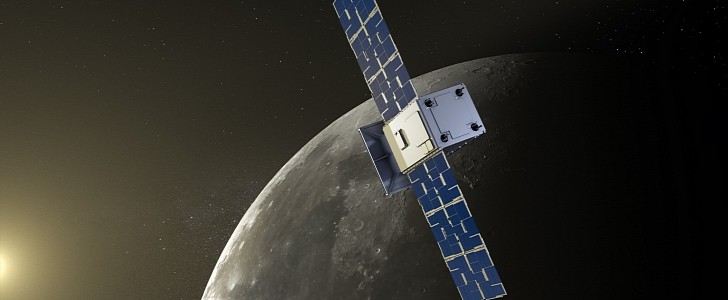After a successful deployment, NASA’s CAPSTONE satellite suddenly went silent. The agency lost contact for around 24 hours with its microwave-size probe. But the issue was quickly solved, and on July 6th, NASA announced that it had re-established communication with the CubeSat.
On June 28th, NASA’s CAPSTONE (Cislunar Autonomous Positioning System Technology Operations and Navigation Experiment) was launched on board a Rocket Lab Electron rocket. Its mission? To pave the way for NASA’s Gateway, a future outpost set to orbit the Moon as part of the Artemis program.
On July 4th, the CubeSat was released from Rocket Lab’s Photon third stage. Shortly after it began its solo journey towards the Moon, the CAPSTONE went silent. NASA recently solved the mystery regarding the issue and took to Twitter to announce that the probe’s radio “became inoperable during an attempt to access diagnostic data. The radio did not immediately reboot due to a fault in the flight software.”
The spacecraft was out of contact with Earth for 24 hours. Fortunately, CAPSTONE maintained its orientation autonomously while the signal was lost. It also kept its antenna directed towards Earth and maintained its battery charged.
The agency says that the spacecraft’s autonomous flight software system cleared the issue, and it was able to re-establish communication with the probe. Today (July 7th), the team conducted a trajectory correction maneuver, the first out of several efforts that will ensure the spacecraft stays on a precise trajectory to the Moon.
CAPSTONE will travel for around three months using its propulsion system before entering orbit around the Moon. If all goes well, the CubeSat will arrive at its destination on November 13th.
Once that takes place, CAPSTONE will begin a six-month journey that will see it fly near and around the satellite to help scientists better understand the characteristics of the orbit. It will also demonstrate different innovative technologies that will pave the way for the Artemis’ Gateway.
On July 4th, the CubeSat was released from Rocket Lab’s Photon third stage. Shortly after it began its solo journey towards the Moon, the CAPSTONE went silent. NASA recently solved the mystery regarding the issue and took to Twitter to announce that the probe’s radio “became inoperable during an attempt to access diagnostic data. The radio did not immediately reboot due to a fault in the flight software.”
The spacecraft was out of contact with Earth for 24 hours. Fortunately, CAPSTONE maintained its orientation autonomously while the signal was lost. It also kept its antenna directed towards Earth and maintained its battery charged.
The agency says that the spacecraft’s autonomous flight software system cleared the issue, and it was able to re-establish communication with the probe. Today (July 7th), the team conducted a trajectory correction maneuver, the first out of several efforts that will ensure the spacecraft stays on a precise trajectory to the Moon.
CAPSTONE will travel for around three months using its propulsion system before entering orbit around the Moon. If all goes well, the CubeSat will arrive at its destination on November 13th.
Once that takes place, CAPSTONE will begin a six-month journey that will see it fly near and around the satellite to help scientists better understand the characteristics of the orbit. It will also demonstrate different innovative technologies that will pave the way for the Artemis’ Gateway.
MISSION UPDATE: Communications mystery solved#CAPSTONE’s radio became inoperable during an attempt to access diagnostic data. The radio did not immediately reboot due to a fault in the flight software which has since been cleared. More details: https://t.co/DW3fWrC8e6 pic.twitter.com/QRpiebt519
— NASA Ames (@NASAAmes) July 7, 2022






